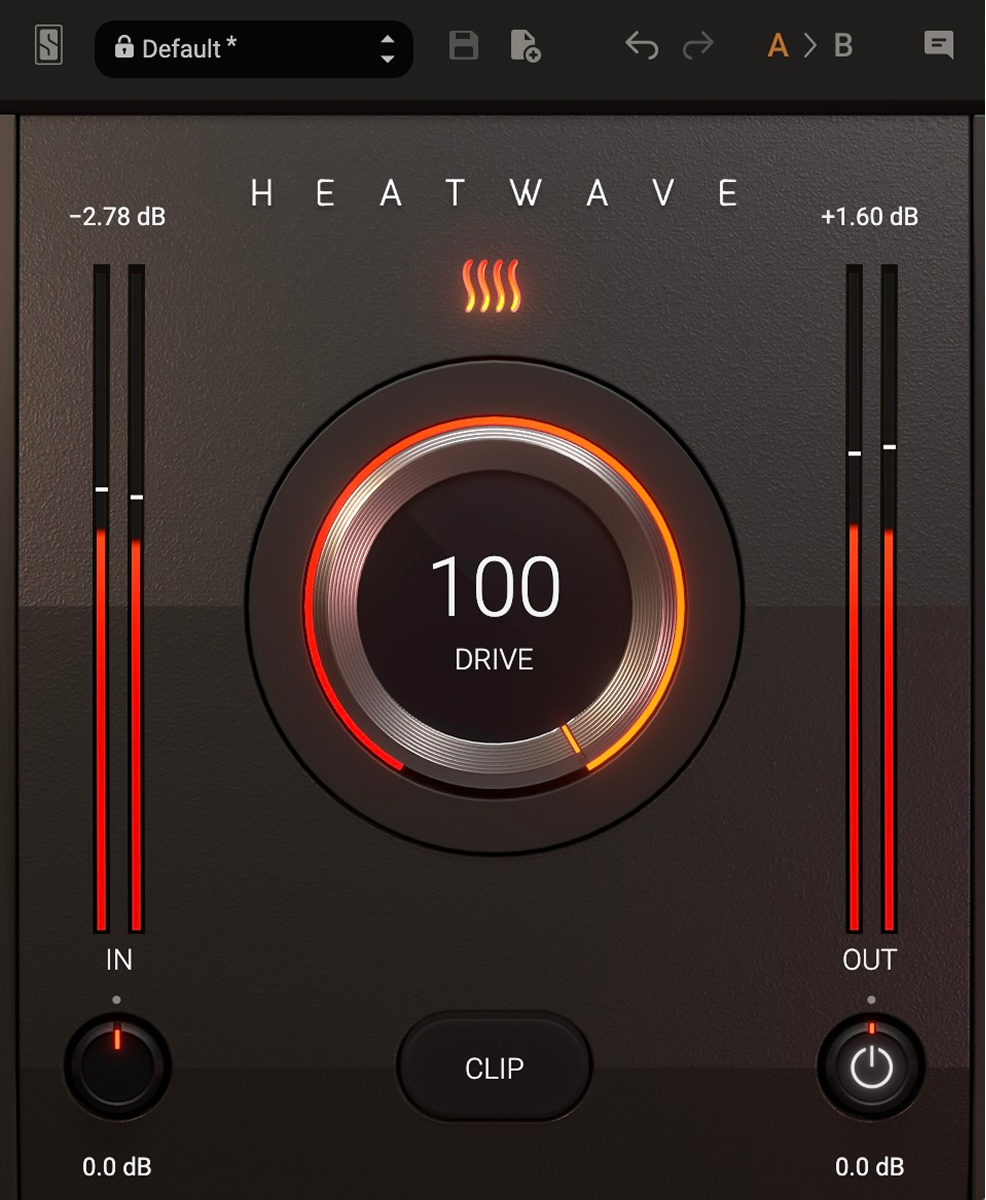Heatwave
Heatwave is a special type of saturation plug-in that can quickly add warmth, grit, edge, and texture while preserving transients.
Saturators are useful tools in music production. They typically work in the amplitude domain—when audio levels exceed a certain ceiling, the output of the saturator becomes non-linear which introduces new and interesting harmonics.
Being based on dynamic range, it’s usually the louder transient components of sounds that get softened, rounded, distorted, or even clipped first by a saturator. By the time you drive these types of devices hard enough that the sustained portions of the sounds become affected, the transient components are completely compromised. Drums might sound massive by that point, but the important attack or “snap” at the start of each individual drum sound will be gone.
Using Heatwave, you can enjoy the textures of subtle or aggressive saturation while keeping transient details clear. Drums become beefy while preserving their attacks. Guitars can be warmed up while keeping the pick-work clean. Add edge to vocals while maintaining articulation.
With Heatwave, you get the best of both worlds.
Technical Note
Heatwave uses internal oversampling to ensure the highest quality of saturation. The oversampling is automatic, and the multiplier is based on the project sample rate. Heatwave attempts to process internally as close to 300kHz sample rate as possible and chooses an oversampling multiplier which gets closest to this value. For example, if you project is at 44.1kHz sample rate, 7x oversampling will be used as 44100Hz x 7 = 308,700Hz. Similarly, if your project is running at 48kHz sample rate, 6x oversampling will be used since 48000Hz x 6 = 288,000Hz.
Overview

Controls
Heatwave has just a few controls for achieving your desired sound quickly and easily.
- DRIVE: This is the primary control of Heatwave. At zero (fully counter-clockwise), Heatwave doesn’t color the sound. As you turn this knob clockwise, Heatwave will begin to shape the sound, adding more and more saturation and texture as the value increases.
- CLIP: Turning the CLIP button on adds a clipper to the output of the Heatwave algorithm. This clipper is located before the OUT knob so that the character of the clip doesn’t change when setting the output level of the plug-in.
- IN: The Input Trim knob adjusts the level of audio being fed into the Heatwave algorithm. The audio level being fed into the Heatwave algorithm is shown on the meters above the IN knob. In addition to the main DRIVE knob, the IN knob can also affect the sound of the plug-in—you can achieve other sounds by increasing the IN knob while leaving the DRIVE knob in place.
- OUT: The Output Trim knob adjusts the output level of Heatwave, thus allowing you to compensate for any volume changes that might occur as audio goes through the plug-in. The output level from the Heatwave plug-in is shown in the meters above the OUT knob.
- ENABLE: Clicking the power icon in the center of the OUT knob toggles the Heatwave plug-in on and off. When in the plug-in is in its bypassed state, the meters and indicators in Heatwave will turn white.
Top Bar Functions
| Slate Digital Logo | Open the About Panel with additional links to User Guide and Online Support. |
| Preset Menu | Shows the currently loaded Preset. Click to open the Preset menu. |
| Save Preset | Save/override the currently loaded Preset. |
| Undo/Redo | Cancel or restore any recent actions inside the plugin. Limited to last 20 actions. |
| A/B Snapshots | Toggle Browser Two slots to easily compare different settings. The plugin is always operating on one of the two Snapshots, A or B, the current Snapshot being highlighted. Clicking on the arrow between A/B will copy the current Snapshot to the other. |
| Show/Hide Tooltips | Toggle Tooltips display. |
Keyboard Shortcuts
| Feature | macOS | Windows |
|---|---|---|
| Modify value | Mouse wheel | Mouse wheel |
| Fine adjustments | ⌘ + Drag Or Right Click + Drag | Ctrl + Drag Or Right Click + Drag |
| Counter-link IN & OUT Trim Knobs | Shift + Drag | Shift + Drag |
| Reset value to default | ⌥ + Click Or Double Click | Alt + Click Or Double Click |
| Edit values | Double Click then Enter | Double Click then Enter |
| Undo | N/A | Ctrl + Z |
| Redo | N/A | Ctrl + Y |